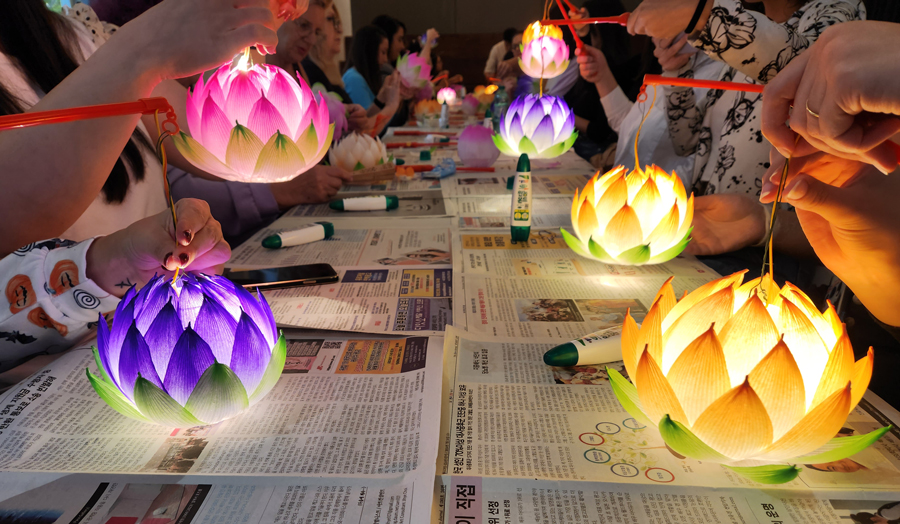[MISSION] The Celebration of Light: Buddha’s Birthday and Its Fusion with Modernity in the Republic of Korea
2025-05-09A spiritual anniversary marked by the lunar calendar, Buddha’s Birthday transforms the Republic of Korea into a sea of light every year on the eighth day of the fourth lunar month. In 2025, the celebration falls on May 5. Known as Seokga Tansinil, it is one of the most significant commemorations in Korean Buddhism, extending beyond religion to become a cultural expression embraced nationwide.
![Foto del día] Limpieza de estatuas para celebrar el ...](https://spanish.korea.net/upload/fileShare/2021/05/usr_1620711083480.jpg)
Historical Origins of the Practice
The commemoration traces its origins to India, where Prince Siddhartha Gautama—who would later become Buddha—was born around the 6th century BCE. As Buddhism spread across Asia, this date was adopted and reinterpreted within each cultural context. In Korea, records show the celebration began during the Silla Kingdom (7th–10th centuries), when Buddhism became the state religion. By the Goryeo Dynasty (918–1392), the tradition had taken shape with temple rituals and the crafting of paper lanterns to honor the Buddha. Even during the Joseon Dynasty, when Confucianism dominated, this custom was preserved. Scholars and sources such as Asia Society and The Korea Times confirm that the lantern festival (Yeon Deung Hoe) is one of the country’s oldest religious events, with mentions in documents as early as the 9th century.
The Eternal Symbolism of the Lotus Lantern
As explained on platforms like I Visit Korea, the tradition of crafting lotus lanterns is deeply embedded in Korea’s Buddhist heritage. These delicately handcrafted lanterns, vibrant and luminous, symbolize spiritual awakening. Lighting one reflects a desire to overcome ignorance and suffering, illuminating the path toward wisdom and compassion. According to the Jogye Order, Korea’s largest Buddhist sect, the lotus lantern is a “luminous prayer that links all beings to Buddha’s wisdom and a shared yearning for harmony.”

Buddhist Philosophy and Korean Worldview
The lotus flower holds profound meaning in Buddhist scriptures—blooming from muddy waters, it represents purity emerging from hardship. In Korea, this symbol aligns with a worldview that cherishes harmony, community, and nature. Lighting a lantern goes beyond ritual; it becomes a luminous offering that purifies the heart, honors ancestors, and expresses a collective hope for peace. Institutions such as the Academy of Korean Studies and UNESCO highlight how such traditions help preserve cultural heritage and engage younger generations. In fact, since 2020, the Yeon Deung Hoe festival has been recognized as UNESCO Intangible Cultural Heritage, elevating its symbolic and global value.

Tradition in Dialogue with Modernity
Modernity has added new dimensions to this celebration. In Seoul, the Lotus Lantern Festival features parades, massive illuminated installations, and participatory events. Dragons, lotus flowers, popular culture figures, and digital art blend with centuries-old rituals. As festival volunteer Ji-eun Park shared in an interview, watching people from so many cultures light lanterns together made her realize that, regardless of where we come from, we all seek light in our lives.
Temples as Spaces for Reflection and Encounter
During this season, Buddhist temples open their doors for activities such as ritual bathing of the infant Buddha, public meditations, and lantern-making workshops. These practices offer locals and tourists an opportunity to experience the spiritual essence of the festival while engaging with Korean Buddhist hospitality and teachings. Cultural and tourism platforms like I Visit Korea and Asia Society note that these efforts aim to make the event more accessible and meaningful to diverse audiences.
How about this article?
- Like1
- Support0
- Amazing1
- Sad0
- Curious0
- Insightful0


